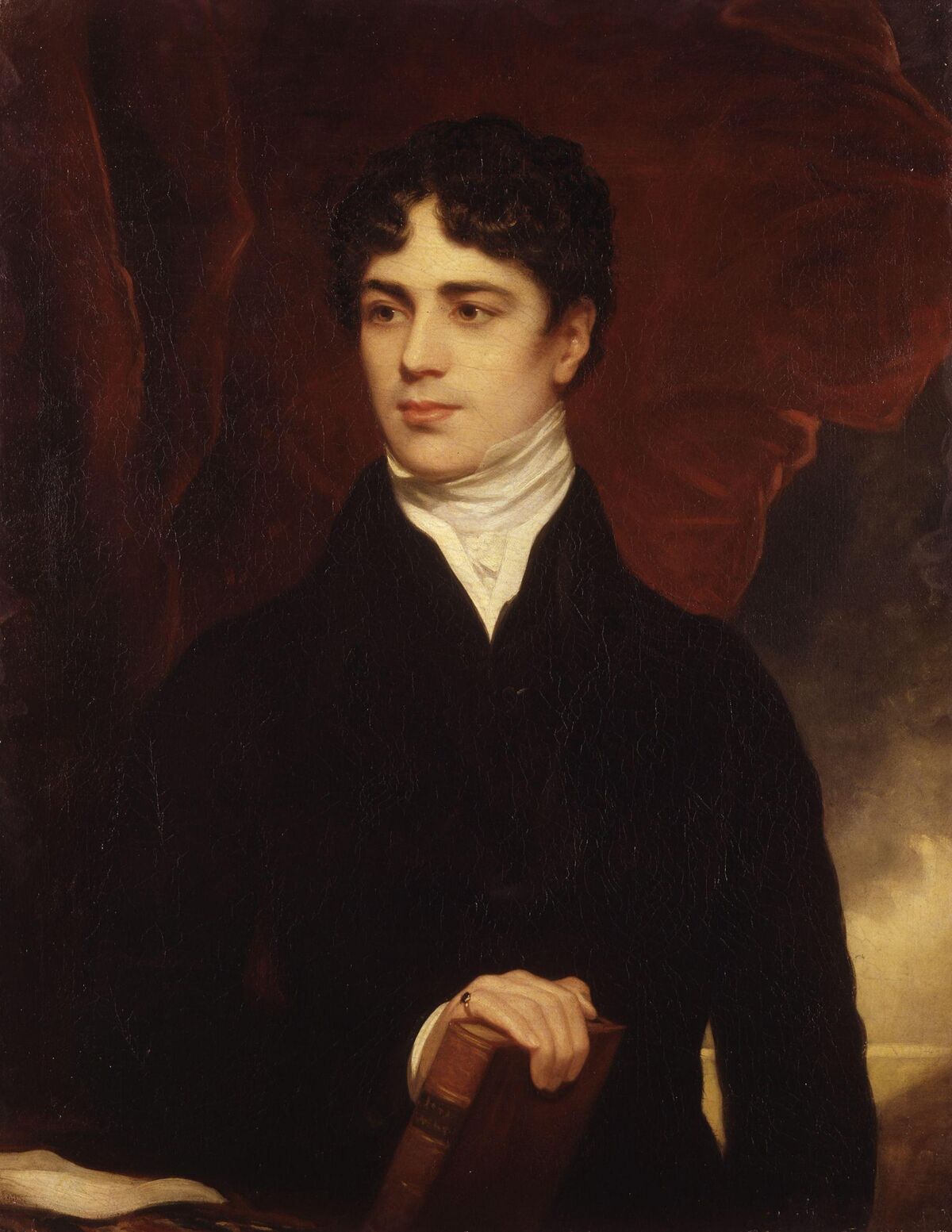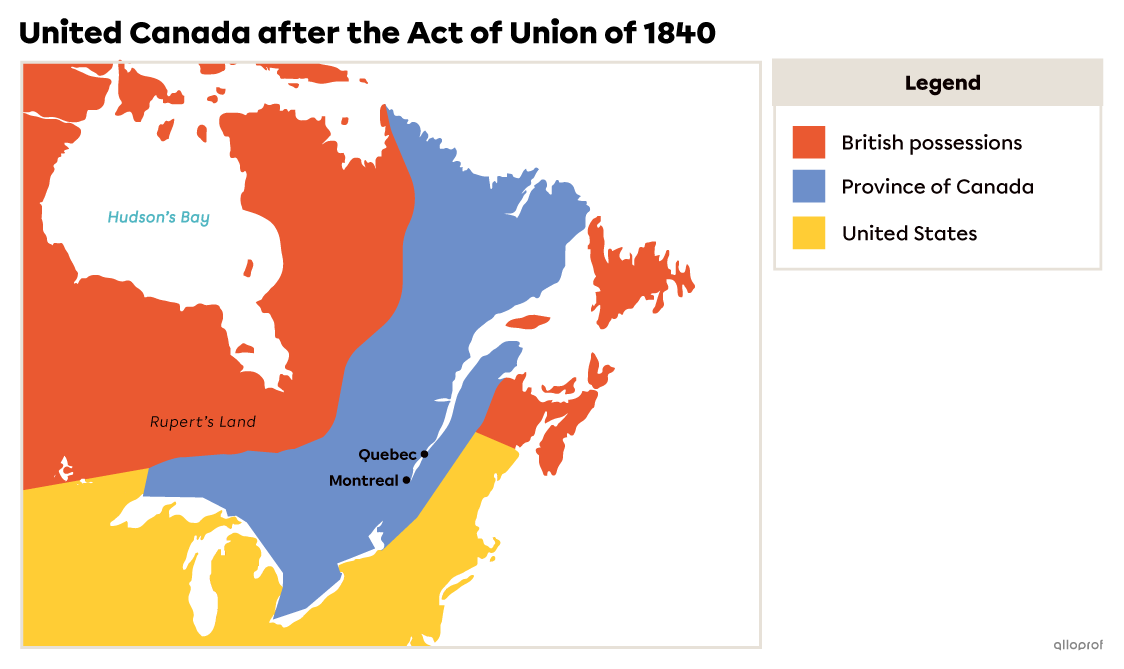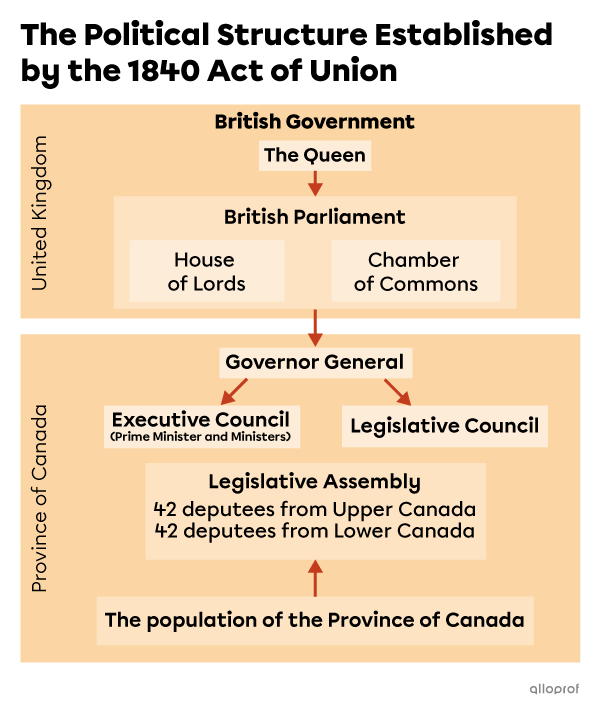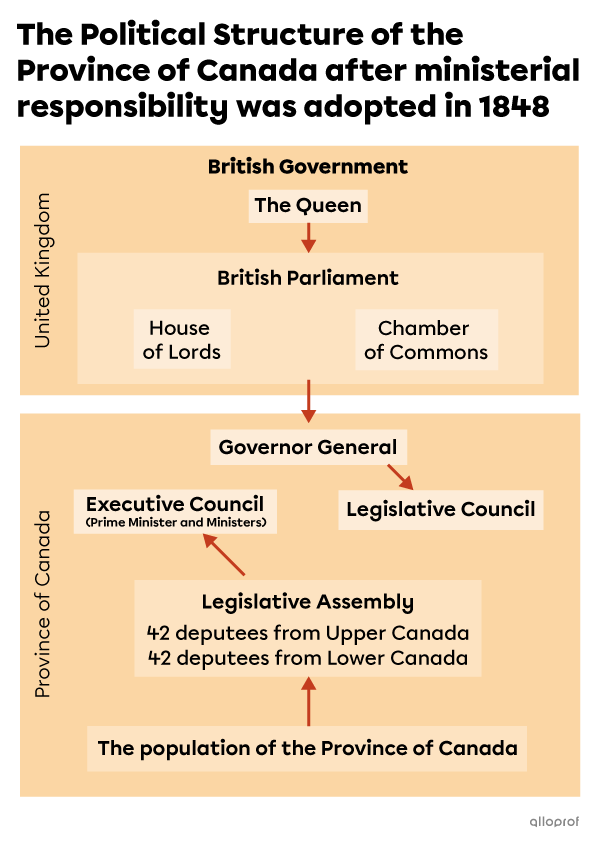Lord Durham submitted a report to the British Crown after the rebellions of 1837 and 1838 failed. In this report, he introduced the idea of uniting the two provinces of Canada to end the political problems between Francophones and Anglophones. The goal of this measure was to assimilate French Canadians in order to reduce tension in the colony. Unification would also enable economic growth in the colony.
Several groups in Lower Canada disagreed with this unification project. However, the two territories accepted it in late 1839, and it was adopted in July of 1840.
Lord Durham proposed the establishment of a responsible government.

In a responsible government, members of the Executive Council (which implements the laws and deals with the budget and territory) are elected by the Legislative Assembly, whose members have themselves been elected by the people. This gives the Legislative Assembly real political power.
The terms responsible government and ministerial responsibility mean the same thing.
Seeing as the king wanted to keep control, London did not accept Lord Durham’s suggestion of setting up a responsible government in the colony.
The only change in territory caused by the Act of Union was the unification of Upper and Lower Canada into the Province of Canada.
Another name used for the Province of Canada was United Canada. Upper Canada was then called Canada West while Canada East was used for Lower Canada.

The Province of Canada’s territory after the 1840 Act of Union
After the Conquest, British authorities appointed a governor who had nearly full control over the colony. Among other things, the governor had the right of veto and chose the Executive Council members himself.
The Legislative Assembly, which included representatives from Lower and Upper Canada, was also divided after the Act of Union. 42 deputies were elected from each territory for a total of 84 representatives. Each territory had the same number of seats, even though Lower Canada had 200 000 more residents than Upper Canada at the time.
Moreover, given that Lower Canada was populated by both francophone and anglophone deputies were elected among the 42 members of Parliament in the territory. This meant that the French-Canadian population was also a minority in Parliament.

Political Structure Established by the 1840 Act of Union
With the Act of Union, the debts of the two provinces of Canada were merged. Since the debt of Lower Canada was significantly lower than that of Upper Canada, the French Canadian population saw this as an injustice, since they were burdened with a debt that was not their own.
The Province of Canada’s official language became English. Written documents, enactments and Parliamentary reports had to be written in English. French Canadians kept Lower Canada’s French civil law, but British criminal law remained in effect in the Province.
When the Act of Union was put in place, the Catholic Church was afraid that the French Canadian population would be assimilated and that Protestantism would become more popular at the expense of Catholicism. However, since the Catholic Church had sided with British powers during the 1837–1838 rebellions, they were rewarded for this loyalty with the confidence of the authorities. Therefore, the Catholic Church cooperated with the government. In return, the government granted the right to oversee the population’s education to the church. Education was one of the ways the Catholic Church held a strong moral influence over French Canadian society.
Two political groups formed after the Act of Union was put in place: the Conservatives (Tories) and the Reformers. Conservatives did not want any political changes and defended the values of the business class. On the other hand, Reformers demanded changes such as obtaining a responsible government, which they considered most urgent.
Upper Canada Reformer representatives, led by Robert Baldwin, invited Lower Canada Reformers to join them in order to gain more power in the Legislative Assembly. Louis-Hippolyte La Fontaine, leader of the Lower Canada Reformers, accepted the offer with one condition: Upper Canada Reformers had to accept the French Canadians’ different cultural identity and give up on the idea of assimilating them. As an example, Lower Canada Reformers wanted to start using French again for written documents in Parliament.
The Baldwin/La Fontaine alliance was elected as a majority in the Legislative Assembly in 1841. In 1848, this alliance successfully established a responsible government. This enabled the Province of Canada to become more independent over time because the Executive Council was elected by members of the Legislative Assembly.

The political structure after ministerial responsibility was adopted in 1848